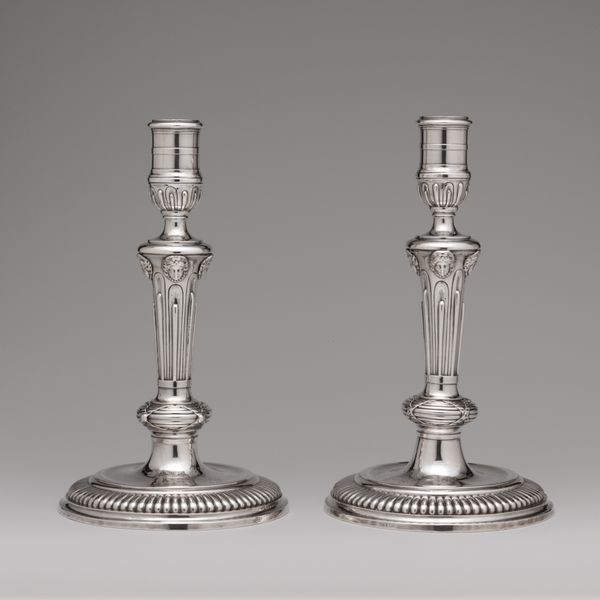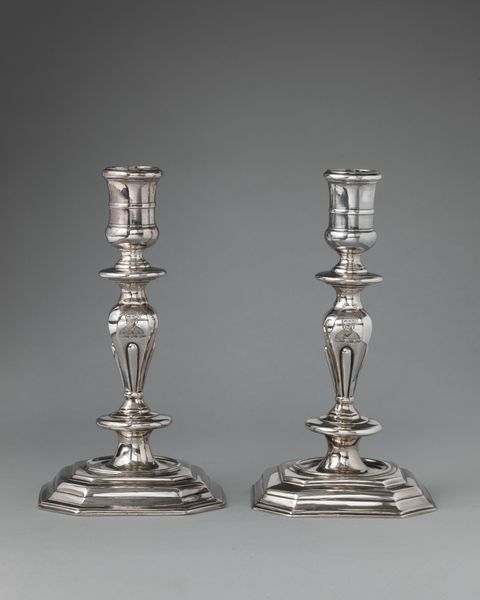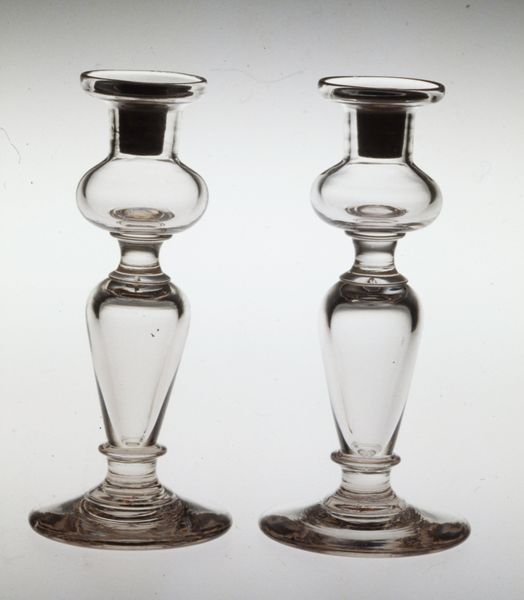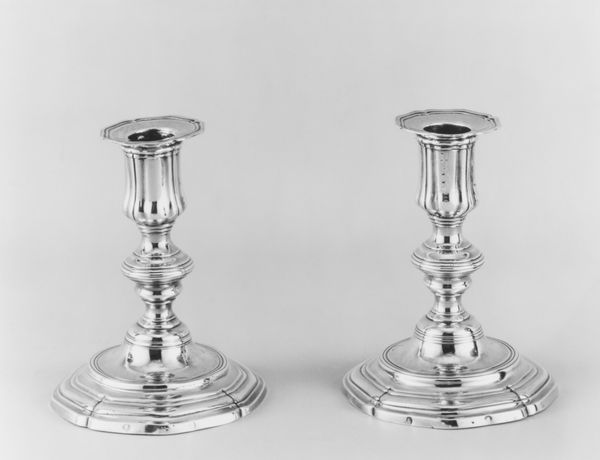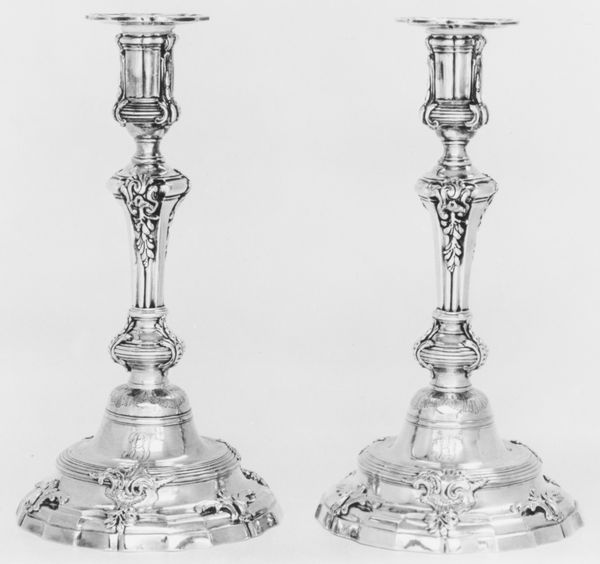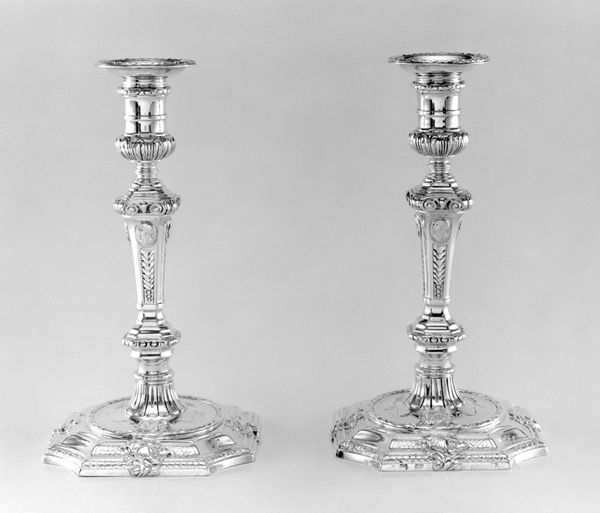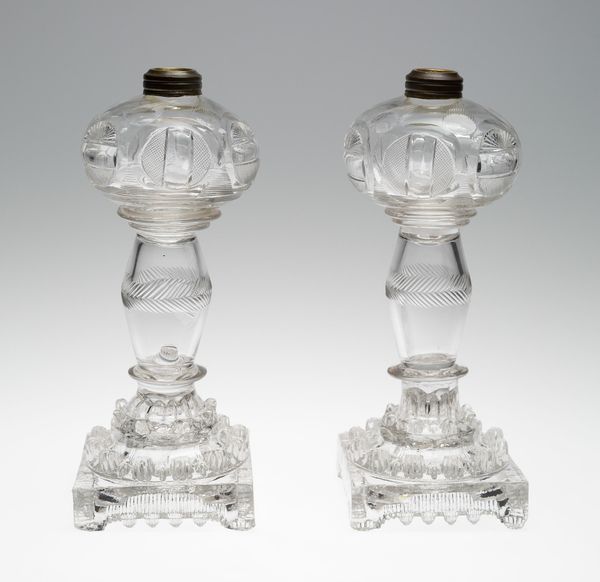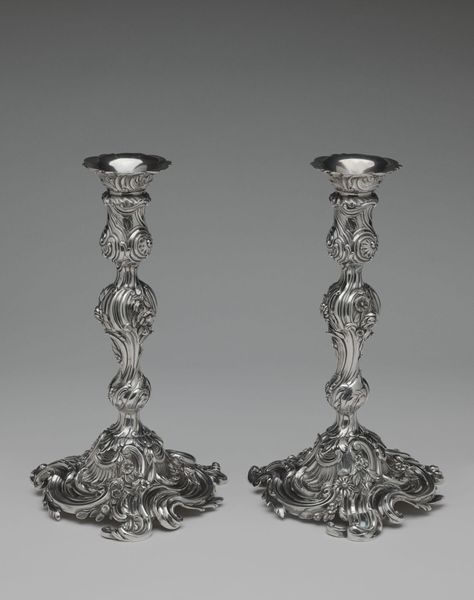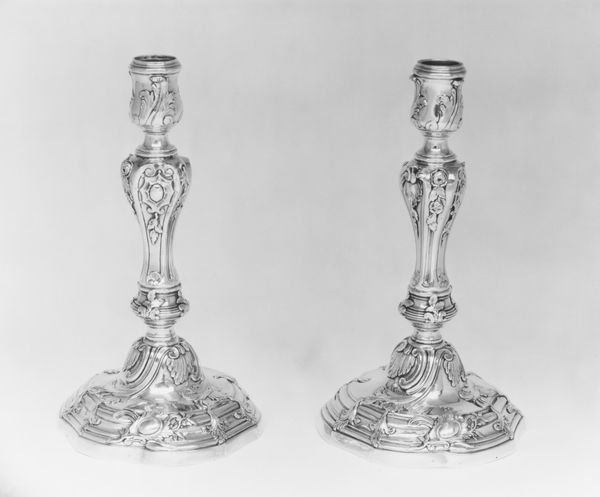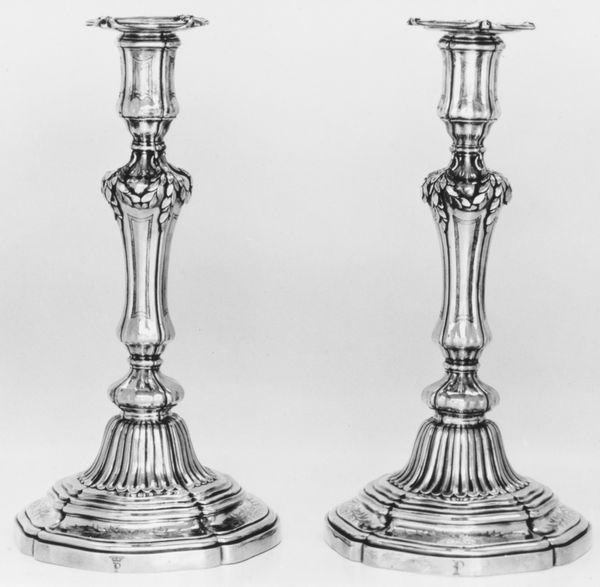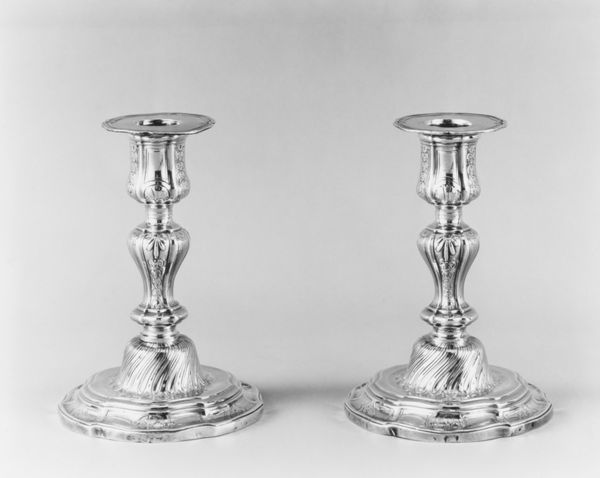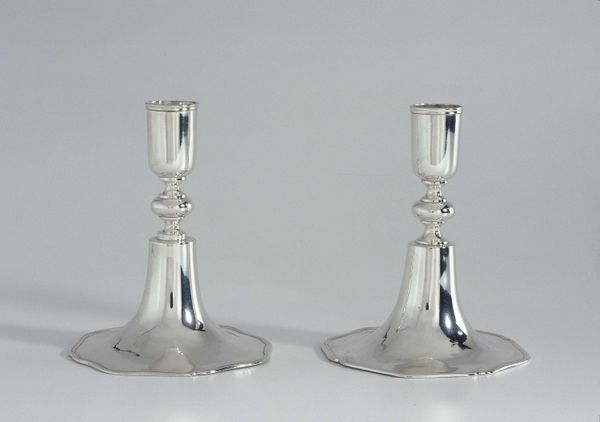
glass
#
glass
#
united-states
#
decorative-art
Dimensions: Each: 24.4 × 12.5 (base) cm (9 5/8 × 4 1/4 in.)
Copyright: Public Domain
Editor: Here we have a pair of glass candlesticks, created sometime between 1860 and 1900 by an anonymous maker, here on display at the Art Institute of Chicago. The geometric form makes me think of building blocks… What do you see when you look at this pair? Curator: I’m immediately drawn to the crystalline nature of the glass and the way it’s shaped. Consider how candlelight would play across those surfaces, the shadows dancing, the atmosphere shifting… It's a material culture object embodying ritual and status. Think of the historical symbolism of light versus darkness. In what ways would these have served a social or spiritual function? Editor: That’s fascinating! So, beyond just holding candles, they carried a symbolic weight? Was this common for decorative art pieces of the time? Curator: Absolutely. Decorative arts often reflect deeply held beliefs. Crystal itself was associated with purity and clarity; placing a light source within it amplifies these associations. Their presence during a meal or gathering elevates a space, evoking a sense of occasion. The symmetry of the pair, in particular, conveys balance and harmony, virtues that were highly prized. Do you think they would be a valuable heirloom? Editor: Now that you mention it, thinking about inherited stories makes me consider their worth beyond monetary value. These could be vessels of collective memory. Curator: Precisely. They represent a desire for beauty, order, and a connection to something beyond the everyday. Visual metaphors that transcend time.
Comments
No comments
Be the first to comment and join the conversation on the ultimate creative platform.

